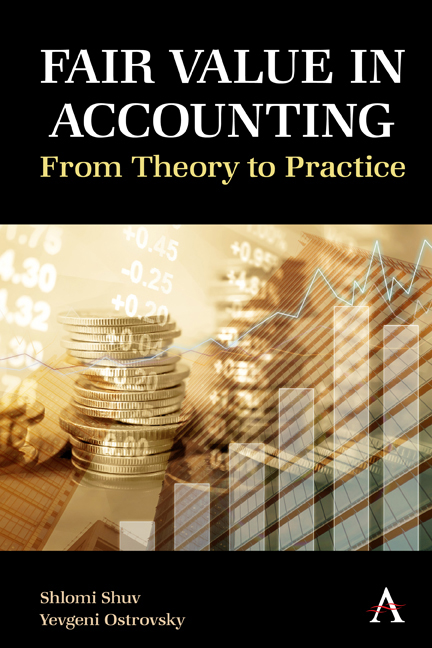Book contents
- Frontmatter
- Contents
- Preface
- Chapter 1 Background
- Chapter 2 Definition and Scope of Fair Value
- Chapter 3 Identifying the Asset or Liability to Be Measured
- Chapter 4 Determining the Market in Which the Transaction Will Take Place
- Chapter 5 Identifying Market Participants
- Chapter 6 Defining the Transaction Price
- Chapter 7 Definition of an Orderly Transaction
- Chapter 8 Fair Value at Initial Recognition
- Chapter 9 Application to Nonfinancial Assets
- Chapter 10 Measuring Fair Value of Liabilities and Equity Instruments
- Chapter 11 Application to Financial Instruments with Netting Positions
- Chapter 12 Valuation Techniques
- Chapter 13 Disclosure Provisions
Chapter 12 - Valuation Techniques
Published online by Cambridge University Press: 15 September 2022
- Frontmatter
- Contents
- Preface
- Chapter 1 Background
- Chapter 2 Definition and Scope of Fair Value
- Chapter 3 Identifying the Asset or Liability to Be Measured
- Chapter 4 Determining the Market in Which the Transaction Will Take Place
- Chapter 5 Identifying Market Participants
- Chapter 6 Defining the Transaction Price
- Chapter 7 Definition of an Orderly Transaction
- Chapter 8 Fair Value at Initial Recognition
- Chapter 9 Application to Nonfinancial Assets
- Chapter 10 Measuring Fair Value of Liabilities and Equity Instruments
- Chapter 11 Application to Financial Instruments with Netting Positions
- Chapter 12 Valuation Techniques
- Chapter 13 Disclosure Provisions
Summary
Overview
The Standards require fair value to be measured by way of some calculation. In some cases, this calculation can be quite simple. For example, when the fair value is estimated based on a quoted price in an active market of an identical asset or liability, such as an investment in listed shares held by the reporting entity. In such cases, the reporting entity shall multiply the quoted price in the active market by the number of instruments (e.g., shares) it holds. This calculation is sometimes called P × Q (for more information, see Section 2.2).
Another example of a relatively simple calculation is when the fair value of a certain item (such as an investment property) is estimated based on the price paid in an orderly and recent transaction involving that specific asset. For instance, when the reporting entity holds, as of the measurement date, a nonspecific half of a particular building and measures the fair value of that half according to the price in an orderly and current transaction in which the other nonspecific half of the building was recently sold.
Sometimes, however, the calculation will be much more complex, and performing it or selecting the inputs to be used will require the reporting entity to exercise more significant judgment. Thus, for example, it is possible that the market inputs being used in the measurement or the valuation technique itself may need to be adjusted due to unique characteristics of the measured item or due to other factors. Sometimes, reporting entities will need to use various forecasts or relatively complex mathematical methods and formulae and so forth.
The calculation used to measure the fair value (regardless of whether it is a simple or a complex calculation) is called in the Standards a “valuation technique.” The Standards provide provisions and guidelines regarding various aspects of valuation techniques, such as:
a. Considerations in selecting a valuation technique (for more information,
b. Principal approaches of valuation techniques (for more information, see Section 3);
c. Using multiple valuation techniques (for more information, see Section 4);
d. Calibration of valuation techniques (for more information, see Section 5);
e. Changing the valuation techniques (for more information, see Section 6);
f. Adjusting inputs used in the valuation or adjusting the valuation techniques themselves (for more information, see Section 7); and
g. Selecting the inputs used in the valuation technique and the fair value hierarchy (for more information, see Section 8).
- Type
- Chapter
- Information
- Fair Value in AccountingFrom Theory to Practice, pp. 125 - 184Publisher: Anthem PressPrint publication year: 2022



